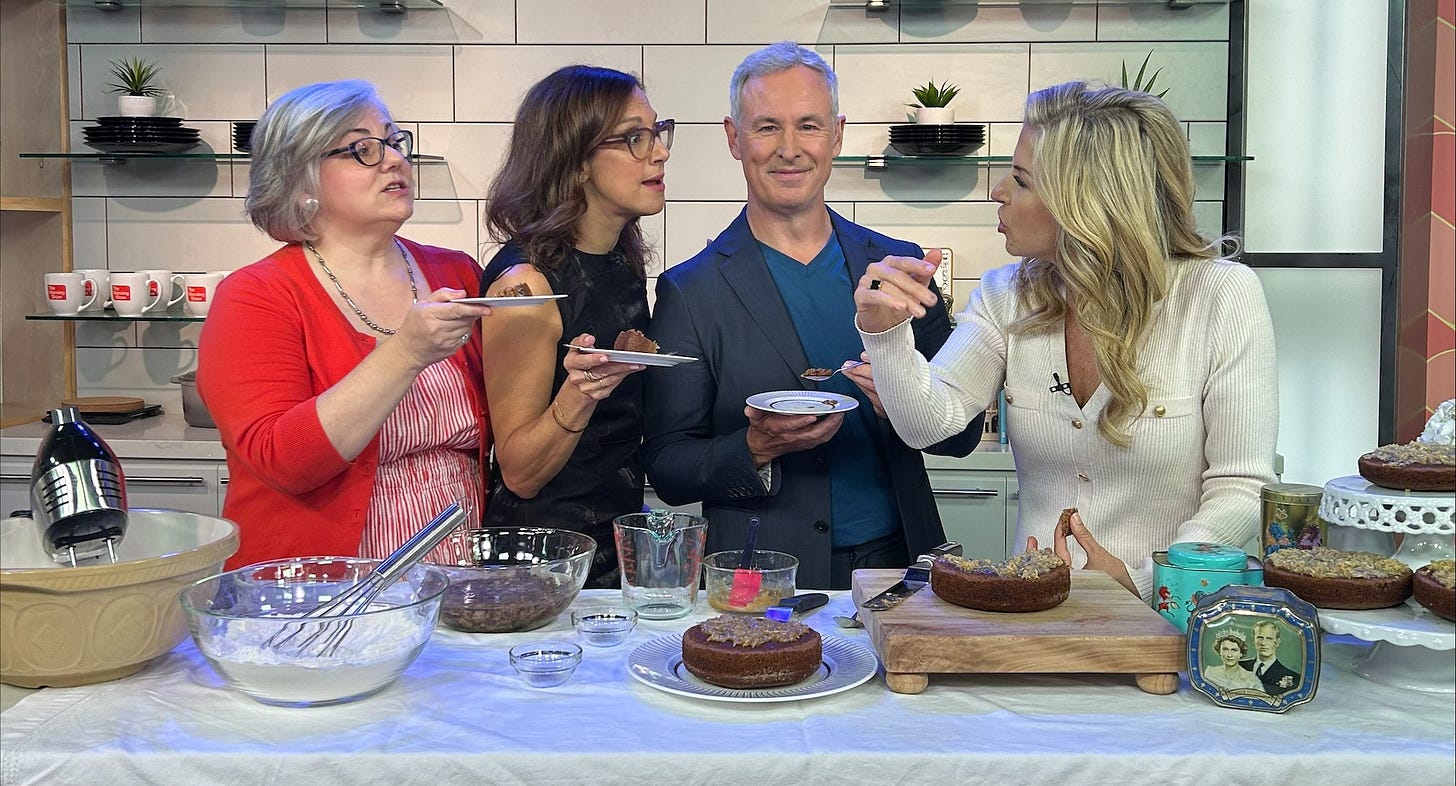The simple pleasure of a Queen Elizabeth cake
Four people + one TV kitchen + a royal recipe = baking fun

I leapt at the chance to marry my interest in royalty with my fondness for cooking. So on Thursday, I was in the kitchen in the studio of The Morning Show on Global T…
Keep reading with a 7-day free trial
Subscribe to WRITE ROYALTY by Patricia Treble to keep reading this post and get 7 days of free access to the full post archives.



